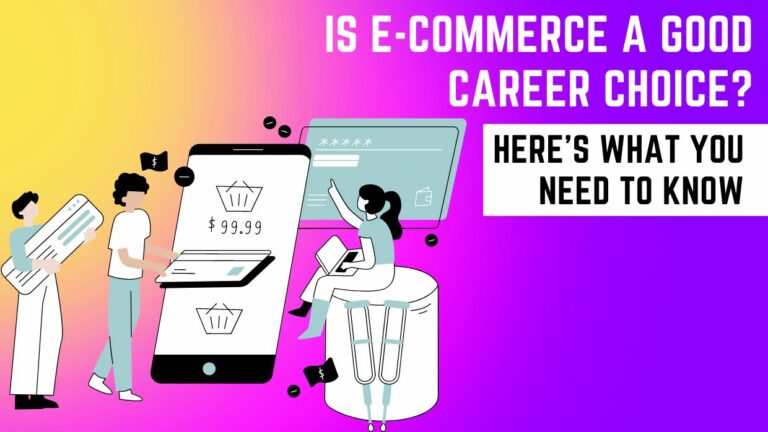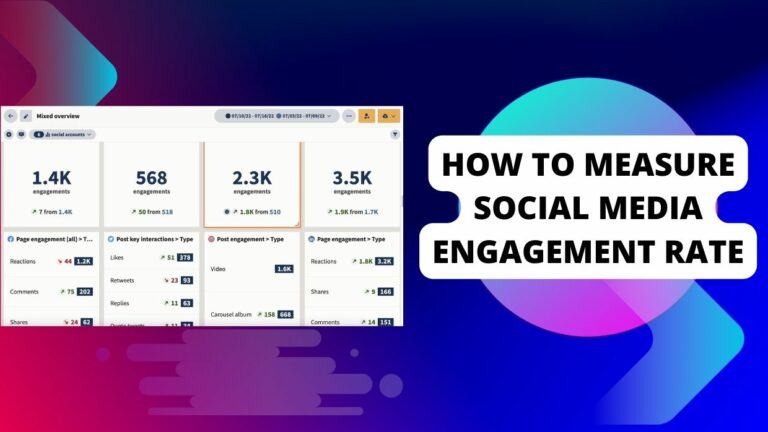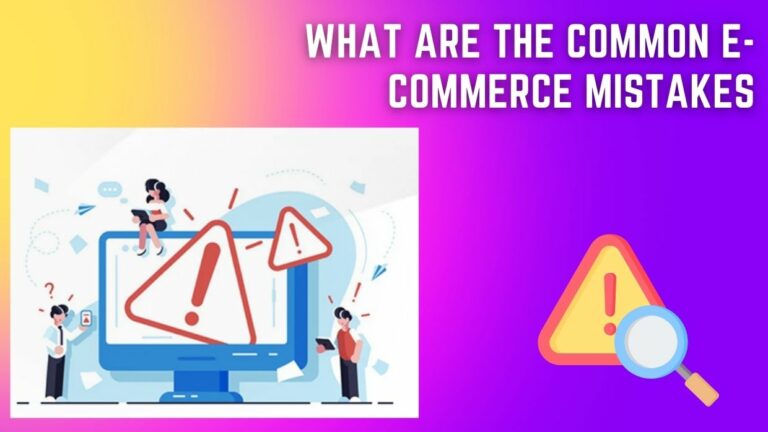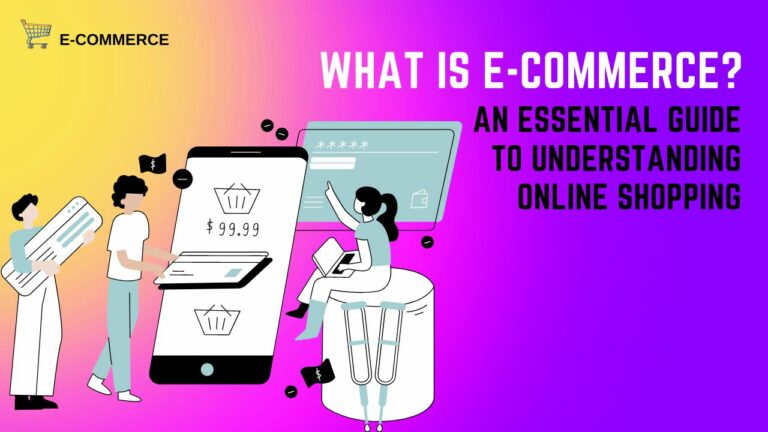E-Commerce Business Models: Which One Is Right For Your Store?
With the rise of e-commerce, it’s more important than ever to understand which business model is right for your store. In this article, we’ll discuss the different “E-Commerce Business Models: Which One Is Right For Your Store?” and their pros and cons to help you make an informed decision about the best model for your business.
Introduction to E-Commerce Business Models
E-commerce business models come in many different shapes and sizes. There’s no one-size-fits-all solution for every business, so it’s important to choose the right model for your store.
What Is E-Commerce? An Essential Guide To Understanding Online Shopping
The most common e-commerce business models are B2C, B2B, C2C, and D2C. Each model has its own unique set of characteristics, so let’s take a closer look at each one:
- B2C: Business-to-consumer e-commerce businesses sell products or services directly to consumers. B2C businesses are typically run by retailers who sell their products online.
- B2B: Business-to-business e-commerce businesses sell products or services to other businesses. These types of transactions are usually between manufacturers and distributors or between wholesalers and retailers.
- C2C: Consumer-to-consumer e-commerce businesses allow consumers to sell products or services to other consumers. The most popular example of a C2C business is an online auction site like eBay.
- D2C: Direct-to-consumer e-commerce businesses sell products or services directly to consumers without going through a middleman. DTC businesses typically have a very close relationship with their customers and offer a high level of customer service.
The Different Types of E-Commerce Business Models
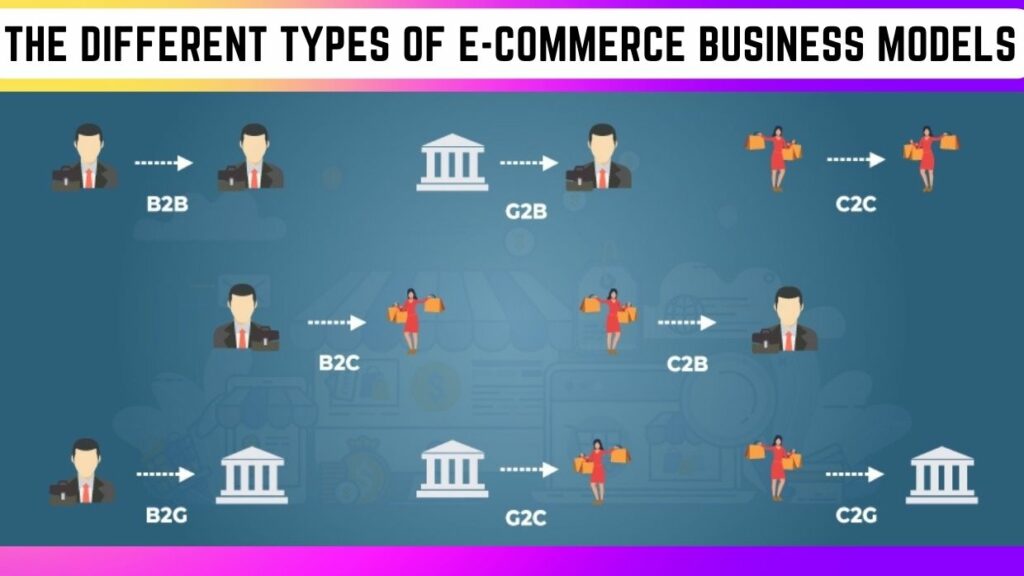
There are four different types of e-commerce business models: Business-to-Business (B2B), Business-to-Consumer (B2C), Consumer-to-Consumer (C2C), and Consumer-to-Business (C2B).
- Business-to-Business (B2B): A B2B e-commerce business model is one in which a business sells products or services to another business. This is the most common type of e-commerce business model.
- Business-to-Consumer (B2C): A B2C e-commerce business model is one in which a business sells products or services to consumers. This is the second most common type of e-commerce business model.
- Consumer-to-Consumer (C2C): A C2C e-commerce business model is one in which consumers sell products or services to other consumers. The most popular platform for this type of e-commerce is eBay.
- Consumer-to-Business (C2B): A C2B e-commerce business model is one in which consumers sell products or services to businesses. An example of this would be a freelance writer who sells their articles to magazines or websites.
Dropshipping
Dropshipping is a type of e-commerce business model in which the online store owner does not keep any inventory of products. Instead, when a store owner receives an order from a customer, they simply contact the supplier, who will then ship the product directly to the customer on the store owner’s behalf. Dropshipping is a great option for those who are looking to get started with an e-commerce business without having to invest in any inventory upfront.
An Easy Guide To Understanding What Is Dropshipping And How It Works
Wholesaling
The term “wholesaling” simply refers to the selling of products in bulk, usually at a discounted price. In the e-commerce world, wholesaling is often done by manufacturers or distributors who sell directly to retailers. Retailers then sell the products to consumers at a markup.
There are several advantages to wholesaling e-commerce products. For starters, it allows you to purchase products at a lower cost, which can be passed on to customers in the form of lower prices. This can be a great way to attract and retain customers. Additionally, wholesaling can help you expand your product offerings without having to carry additional inventory yourself.
Of course, there are also some drawbacks to wholesaling e-commerce products. One is that you’ll likely have less control over pricing and margins than if you were selling the products yourself. Additionally, it can be tough to find good wholesale partners who are reliable and offer good terms.
If you’re considering starting an e-commerce business or expanding your existing business into new product categories, wholesaling may be worth considering. Just be sure to do your research and partner with reputable suppliers before making any commitments.
Subscription Model
The subscription model is a type of e-commerce business model where customers pay a recurring fee to access your product or service. This type of business model is often used for products or services that require ongoing use or maintenance, such as software, memberships, and physical goods. The subscription model can be an effective way to generate revenue, but it requires careful planning and execution to succeed.
When choosing the subscription model for your e-commerce business, you’ll need to consider the type of product or service you’re selling, your target market, and your overall business goals. You’ll also need to have a clear understanding of the costs associated with this type of business model, as well as the risks and challenges involved.
If you’re selling a product or service that requires ongoing use or maintenance, the subscription model could be a good option for your business. This type of business model can be an effective way to generate revenue, but it’s important to carefully consider all of the factors mentioned above before making a final decision.
Marketplace Model
There are two different types of marketplace models for eCommerce businesses: the single-seller marketplace and the multi-seller marketplace.
A single-seller marketplace is a platform that is created and managed by one company that sells its own products. Amazon is the most well-known example of a single-seller marketplace.
A multi-seller marketplace, on the other hand, is a platform that allows multiple sellers to list and sell their products. eBay is the most well-known example of a multi-seller marketplace.
So, which type of marketplace model is right for your eCommerce store? It really depends on your business goals and objectives. If you want to have complete control over your product listings and customer relationships, then a single-seller marketplace is probably a better option for you. However, if you’re looking to tap into a larger customer base and don’t mind sharing some control with other sellers, then a multi-seller marketplace could be a better fit.
Your Step-By-Step Guide To E-commerce: How To Get Started Selling Online Today
Direct Selling
In the world of eCommerce, there are many different business models to choose from. Perhaps the most well-known is direct selling. Direct selling is when a company sells its products directly to consumers, without any middlemen or retailers involved. This type of business model has a few key advantages.
First, it allows companies to have more control over their pricing and profit margins. Second, it gives companies a chance to build stronger relationships with their customers. And third, it can be a great way to reach new markets and tap into new customer segments.
Of course, direct selling also has its disadvantages. One big downside is that it can be very costly and time-consuming to reach new customers and grow your market share. Additionally, without retailers or other intermediaries involved in the sales process, companies have to work harder to create awareness for their brands and products. Finally, direct selling can sometimes give customers a feeling of being “sold to” rather than being served by a company.
If you’re thinking about starting an eCommerce business, or if you’re already running one but are considering switching business models, it’s important to weigh the pros and cons of direct selling before making a decision.
A Step-By-Step Guide To Using Funnel Strategies To Grow Your Business
Advantages and Disadvantages of Each Model
There are four main e-commerce business models: Business-to-Consumer (B2C), Business-to-Business (B2B), Consumer-to-Consumer (C2C), and Consumer-to-Business (C2B). Each model has its own advantages and disadvantages that you should consider before starting your online store.
The B2C model is the most common type of e-commerce. In this model, businesses sell products or services directly to consumers through an online store. The main advantage of B2C e-commerce is that it allows businesses to reach a large number of consumers quickly and easily. The main disadvantage of B2C e-commerce is that it can be difficult to establish trust with customers since they are not able to see or touch the product before purchasing it.
The B2B model is similar to the B2C model, but in this case, businesses sell products or services to other businesses instead of consumers. The main advantage of B2B e-commerce is that it can help businesses save time and money by streamlining the purchase process. The main disadvantage of B2B e-commerce is that it can be difficult to find potential customers since most businesses do not advertise their products or services online.
The C2C model is where consumers sell products or services to other consumers through an online marketplace. The main advantage of C2C e-commerce is that it allows individuals to sell items they no longer need or want. The main disadvantage of C2C e-commerce is that it can be difficult to establish trust with customers since they are unable to see or touch the product before purchasing it.
The C2B model is where consumers sell their services or products directly to businesses. The main advantage of C2B e-commerce is that it allows individuals to monetize their skills and knowledge without having to go through a third party. The main disadvantage of C2B e-commerce is that it can be difficult for businesses to find potential customers since most individual sellers do not advertise their services or products online.
Factors to Consider When Choosing a Business Model
There are a few factors to consider when choosing a business model for your e-commerce store. The first is the type of products you sell. If you sell physical goods, you’ll need to choose a business model that allows you to fulfill orders and ship products to customers. If you sell digital goods, you’ll need a business model that allows you to deliver those goods electronically.
Another factor to consider is the price of your products. If you’re selling expensive items, you’ll need a business model that allows you to make money on each sale. If you’re selling cheaper items, you may be able to make up for lower margins with higher volume sales.
Finally, consider your customer base and target market when choosing a business model. If you’re selling to businesses, you’ll need a different business model than if you’re selling to consumers. Consider who your customers are and what they need from your store before choosing a business model.
Conclusion
We hope this article has given you some helpful insight into the different e-commerce business models available and how they can be beneficial to your store. Every model has its own strengths and weaknesses, so it is important to consider what type of products or services you are selling and which one would work best for your store. With a little research and analysis, choosing the right business model for your e-commerce store should become much easier.


